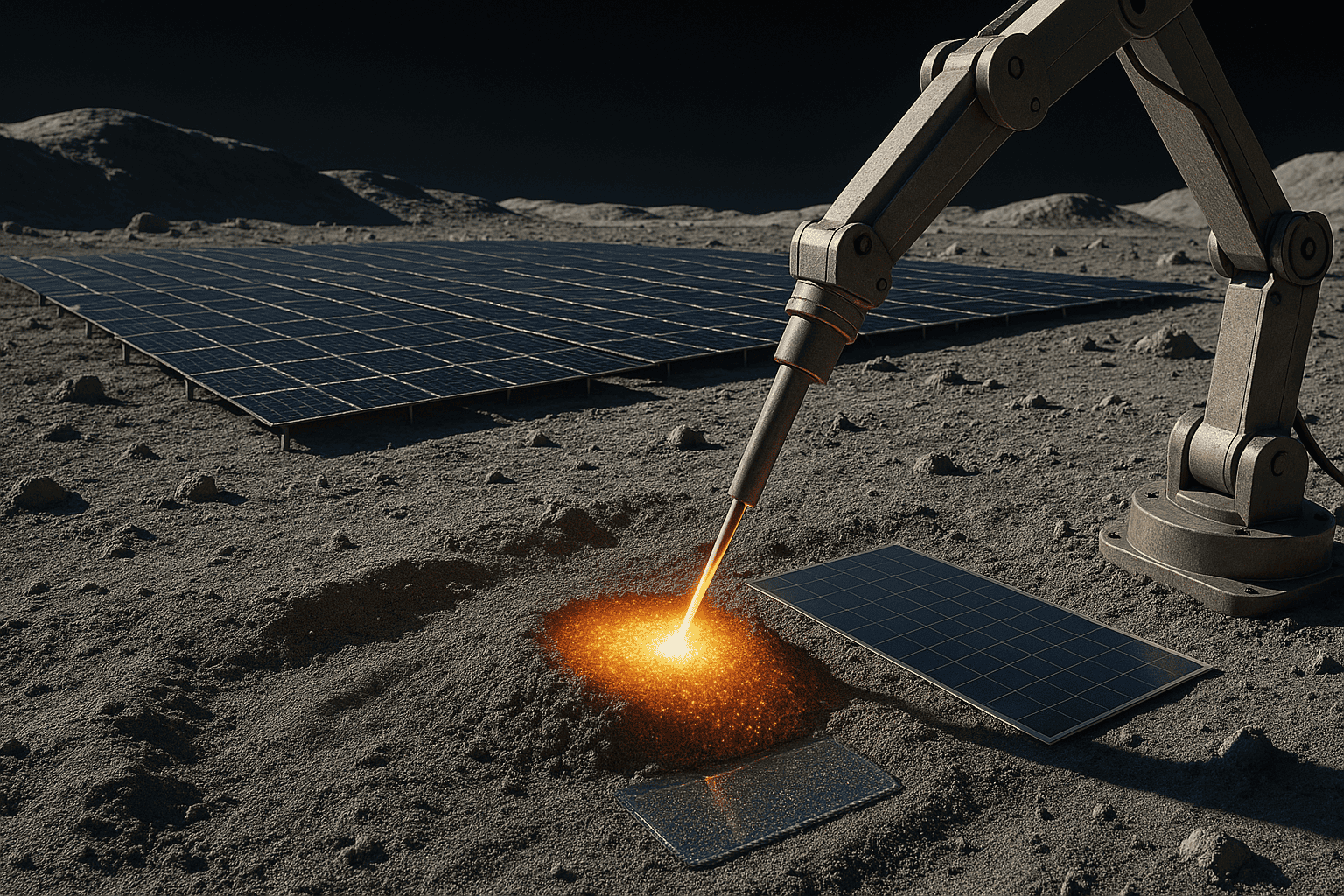Scientists have successfully developed solar cells using simulated Moon dust, a breakthrough that could revolutionize how power is generated in space. These solar cells, designed to convert sunlight into energy efficiently while withstanding radiation damage, were detailed in a recent study published in Device by Cell Press. The innovation aims to overcome major logistical challenges of space missions by eliminating the need to transport heavy, expensive equipment into orbit or to lunar surfaces.
Lunar Regolith Offers Lightweight, Efficient Alternative to Costly Traditional Space Solar Cells
Current solar cells used in space are highly efficient, boasting conversion rates between 30–40%, but they are costly and heavy due to their protective glass or foil coverings. Felix Lang, a researcher at the University of Potsdam and one of the study’s authors, noted that these traditional solar cells are difficult to justify in terms of space transport costs. The new approach addresses this problem by significantly reducing the payload mass required for solar energy systems in space.

The core of this innovation lies in using lunar regolith—the Moon’s surface dust—to fabricate moonglass, the heaviest component in solar cells. Lang’s team demonstrated that melting simulated regolith could create moonglass that, when paired with a low-cost crystal called perovskite, resulted in efficient solar panels. These panels could produce up to 100 times more energy than standard Earth-made panels, while slashing launch mass by 99.4% and transport costs by 99%.
Radiation-Resistant Moonglass Solar Cells Show Promise, But Lunar Challenges Still Remain Unsolved
The newly developed moonglass solar cells also showed enhanced resistance to radiation. When tested under space-like radiation, these panels outperformed traditional ones, which tend to degrade as their glass darkens in space. Moonglass, already containing brownish impurities, doesn’t show further degradation, making it more durable for long-term use in the lunar environment. Additionally, concentrated sunlight could be used to manufacture the glass directly on the Moon without purification.
Despite the promising results, several technical challenges remain before in-situ lunar solar cell production becomes a reality. For instance, perovskite processing solvents may not function in a vacuum, and how low gravity or extreme temperature swings on the Moon will affect the materials is still uncertain. To address these unknowns, the research team plans to conduct a small-scale experiment on the Moon, testing the technique in actual lunar conditions rather than laboratory simulations.


